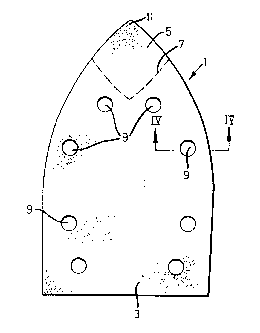Une partie des informations de ce site Web a été fournie par des sources externes. Le gouvernement du Canada n'assume aucune responsabilité concernant la précision, l'actualité ou la fiabilité des informations fournies par les sources externes. Les utilisateurs qui désirent employer cette information devraient consulter directement la source des informations. Le contenu fourni par les sources externes n'est pas assujetti aux exigences sur les langues officielles, la protection des renseignements personnels et l'accessibilité.
L'apparition de différences dans le texte et l'image des Revendications et de l'Abrégé dépend du moment auquel le document est publié. Les textes des Revendications et de l'Abrégé sont affichés :
| (12) Brevet: | (11) CA 2156199 |
|---|---|
| (54) Titre français: | FEUILLES ABRASIVES |
| (54) Titre anglais: | ABRASIVE SHEETS |
| Statut: | Durée expirée - au-delà du délai suivant l'octroi |
| (51) Classification internationale des brevets (CIB): |
|
|---|---|
| (72) Inventeurs : |
|
| (73) Titulaires : |
|
| (71) Demandeurs : |
|
| (74) Agent: | MARKS & CLERK |
| (74) Co-agent: | |
| (45) Délivré: | 2001-11-27 |
| (22) Date de dépôt: | 1995-08-16 |
| (41) Mise à la disponibilité du public: | 1996-02-26 |
| Requête d'examen: | 1998-07-31 |
| Licence disponible: | S.O. |
| Cédé au domaine public: | S.O. |
| (25) Langue des documents déposés: | Anglais |
| Traité de coopération en matière de brevets (PCT): | Non |
|---|
| (30) Données de priorité de la demande: | ||||||
|---|---|---|---|---|---|---|
|
Feuille abrasive 1 pour sableuse ou polisseuse, comprenant une portion de corps 3 et une portion de pointe 5 formant un point de travail 11, la portion de pointe 5 étant définie par une région de faiblesse 7 entre la portion de corps 3 et la portion de pointe 5, la portion de pointe 5 pouvant être séparée de la portion de corps 3, tournée selon un certain angle (figure 2) et repositionnée adjacente à la portion de corps 3 pour changer la pointe de travail 11. Par suite, une feuille abrasive en forme de semelle de fer à repasser, par exemple, peut être munie dune pluralité de points de travail 11. La feuille peut donc être utilisée pendant des périodes prolongées avant dêtre usée.
An abrasive sheet 1 for a sanding or polishing machine,
comprising a body portion 3 and a tip portion 5 providing a
working point 11, the tip portion 5 being defined by a
weakened region 7 between the body portion 3 and the tip
portion 5, wherein the tip portion 5 can be separated from
the body portion 3, turned through an angle (Figure 2) and
re-positioned adjacent the body portion 3 to change the
working point 11. As a result, an iron-shaped abrasive
sheet, for example, can be provided with a plurality of
working points 11. The sheet can, therefore, be used for
longer periods before it is worn out.
Note : Les revendications sont présentées dans la langue officielle dans laquelle elles ont été soumises.
Note : Les descriptions sont présentées dans la langue officielle dans laquelle elles ont été soumises.

2024-08-01 : Dans le cadre de la transition vers les Brevets de nouvelle génération (BNG), la base de données sur les brevets canadiens (BDBC) contient désormais un Historique d'événement plus détaillé, qui reproduit le Journal des événements de notre nouvelle solution interne.
Veuillez noter que les événements débutant par « Inactive : » se réfèrent à des événements qui ne sont plus utilisés dans notre nouvelle solution interne.
Pour une meilleure compréhension de l'état de la demande ou brevet qui figure sur cette page, la rubrique Mise en garde , et les descriptions de Brevet , Historique d'événement , Taxes périodiques et Historique des paiements devraient être consultées.
| Description | Date |
|---|---|
| Inactive : Périmé (brevet - nouvelle loi) | 2015-08-16 |
| Inactive : CIB de MCD | 2006-03-11 |
| Accordé par délivrance | 2001-11-27 |
| Inactive : Page couverture publiée | 2001-11-26 |
| Inactive : Taxe finale reçue | 2001-08-14 |
| Préoctroi | 2001-08-14 |
| Un avis d'acceptation est envoyé | 2001-07-09 |
| Un avis d'acceptation est envoyé | 2001-07-09 |
| Lettre envoyée | 2001-07-09 |
| Inactive : Approuvée aux fins d'acceptation (AFA) | 2001-06-29 |
| Inactive : Correspondance - Formalités | 1999-02-08 |
| Modification reçue - modification volontaire | 1998-10-15 |
| Lettre envoyée | 1998-09-09 |
| Inactive : Renseign. sur l'état - Complets dès date d'ent. journ. | 1998-09-08 |
| Inactive : Dem. traitée sur TS dès date d'ent. journal | 1998-09-08 |
| Toutes les exigences pour l'examen - jugée conforme | 1998-07-31 |
| Exigences pour une requête d'examen - jugée conforme | 1998-07-31 |
| Demande publiée (accessible au public) | 1996-02-26 |
Il n'y a pas d'historique d'abandonnement
Le dernier paiement a été reçu le 2001-08-07
Avis : Si le paiement en totalité n'a pas été reçu au plus tard à la date indiquée, une taxe supplémentaire peut être imposée, soit une des taxes suivantes :
Veuillez vous référer à la page web des taxes sur les brevets de l'OPIC pour voir tous les montants actuels des taxes.
Les titulaires actuels et antérieures au dossier sont affichés en ordre alphabétique.
| Titulaires actuels au dossier |
|---|
| BLACK & DECKER INC. |
| Titulaires antérieures au dossier |
|---|
| COLIN PUGH |
| ERIC COCKBURN |
| MICHAEL MARTIN |